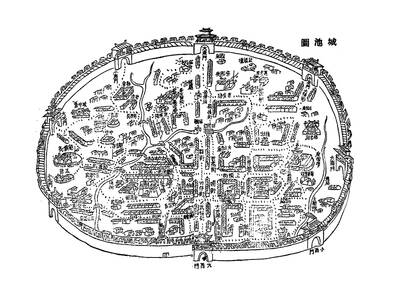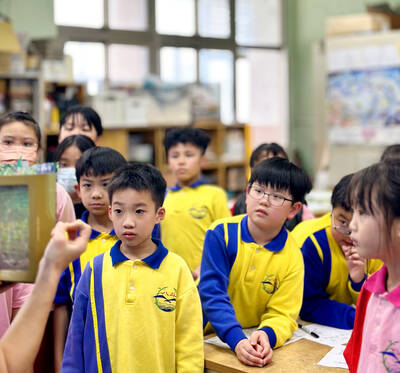Anyone who has graduated from high school has likely read William
Shakespeare's Romeo and Juliet It has become part of the world's collective
literary consciousness and been put to music, danced, sung, filmed, filmed
again and, greatest of all, staged in high school auditoriums the world
over. Taipei is now no exception.
While many productions have veered wildly from the original, Taipei-European
School (TES) will retain not only the language of the bard's classic, but
also its original Italian Renaissance setting, with costumes and set design
developed through the joint efforts of Judith Paulin, the production's
director and an English teacher at TES, and Amanda Darling, a professional
dramatist. The performances will also feature live musical accompaniment.
According to Pauli "The most rewarding aspect of staging the [production]
has been how the school community has come together in support [of our
efforts]. The students have put a huge commitment of time and energy into
the play."
In addition, she said that while this is probably the students' first
experience reading < much less performing < Shakespeare, the play and its
theme of love resonates with the performers. "The students are really
enjoying the challenge," said Paulin.
Romeo and Juliet will be performed at TES' secondary school auditorium next
week, March 14 through March 16. The curtain for each performance will go up
at 7:30pm. The school is located on Yangmingshan and can be reached by
taking the MRT to Shihlin station. From there, ride bus 260 or 265 to Yangte
Ave.
Tickets are NT$100 each, and are available by phone at (02) 2862-2919 or fax
at (02) 2862-1662.

May 26 to June 1 When the Qing Dynasty first took control over many parts of Taiwan in 1684, it roughly continued the Kingdom of Tungning’s administrative borders (see below), setting up one prefecture and three counties. The actual area of control covered today’s Chiayi, Tainan and Kaohsiung. The administrative center was in Taiwan Prefecture, in today’s Tainan. But as Han settlement expanded and due to rebellions and other international incidents, the administrative units became more complex. By the time Taiwan became a province of the Qing in 1887, there were three prefectures, eleven counties, three subprefectures and one directly-administered prefecture, with

It’s an enormous dome of colorful glass, something between the Sistine Chapel and a Marc Chagall fresco. And yet, it’s just a subway station. Formosa Boulevard is the heart of Kaohsiung’s mass transit system. In metro terms, it’s modest: the only transfer station in a network with just two lines. But it’s a landmark nonetheless: a civic space that serves as much more than a point of transit. On a hot Sunday, the corridors and vast halls are filled with a market selling everything from second-hand clothes to toys and house decorations. It’s just one of the many events the station hosts,

Two moves show Taichung Mayor Lu Shiow-yen (盧秀燕) is gunning for Chinese Nationalist Party (KMT) party chair and the 2028 presidential election. Technically, these are not yet “officially” official, but by the rules of Taiwan politics, she is now on the dance floor. Earlier this month Lu confirmed in an interview in Japan’s Nikkei that she was considering running for KMT chair. This is not new news, but according to reports from her camp she previously was still considering the case for and against running. By choosing a respected, international news outlet, she declared it to the world. While the outside world

Through art and storytelling, La Benida Hui empowers children to become environmental heroes, using everything from SpongeBob to microorganisms to reimagine their relationship with nature. “I tell the students that they have superpowers. It needs to be emphasized that their choices can make a difference,” says Hui, an environmental artist and education specialist. For her second year as Badou Elementary’s artist in residence, Hui leads creative lessons on environmental protection, where students reflect on their relationship with nature and transform beach waste into artworks. Standing in lush green hills overlooking the ocean with land extending into the intertidal zone, the school in Keelung